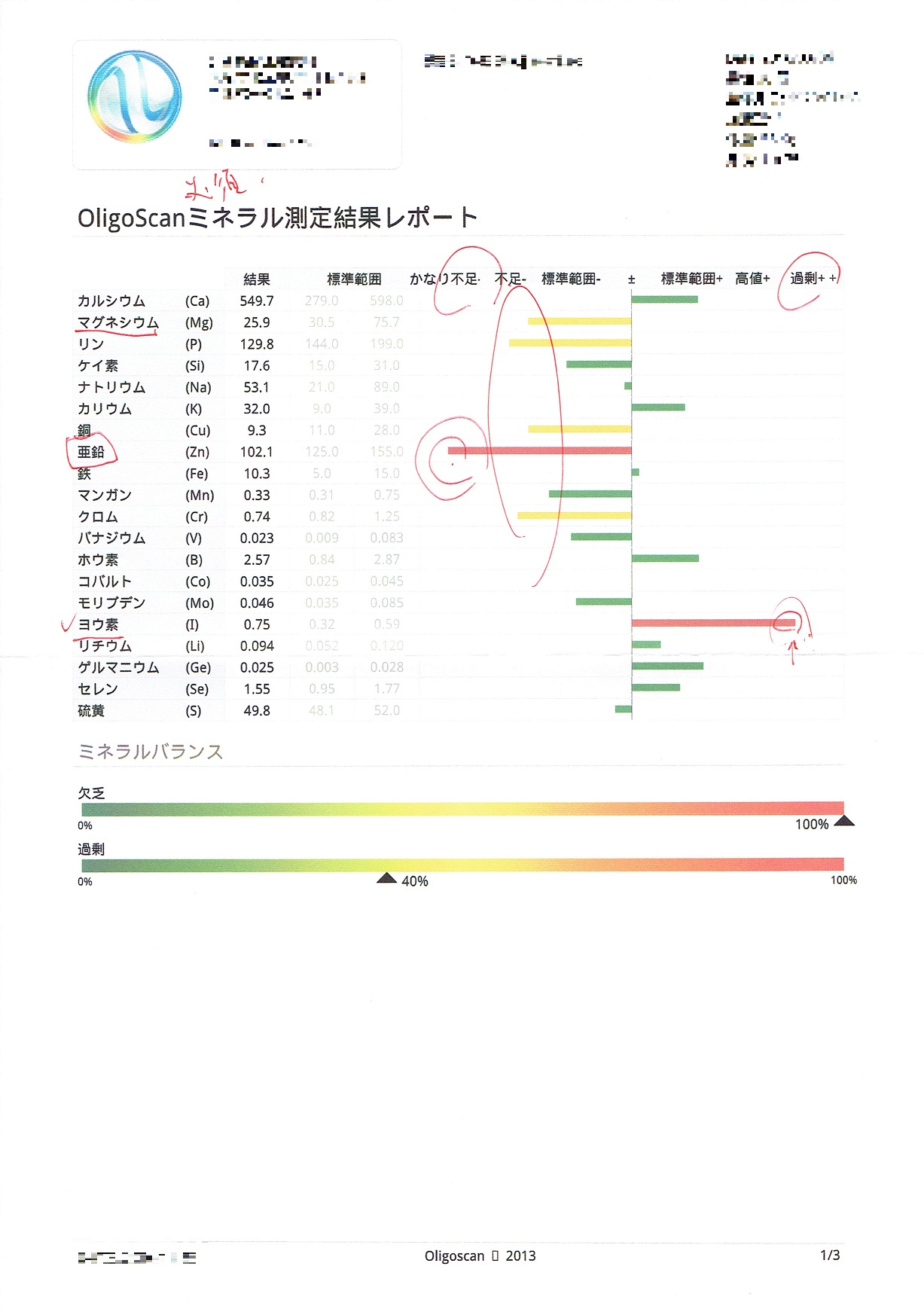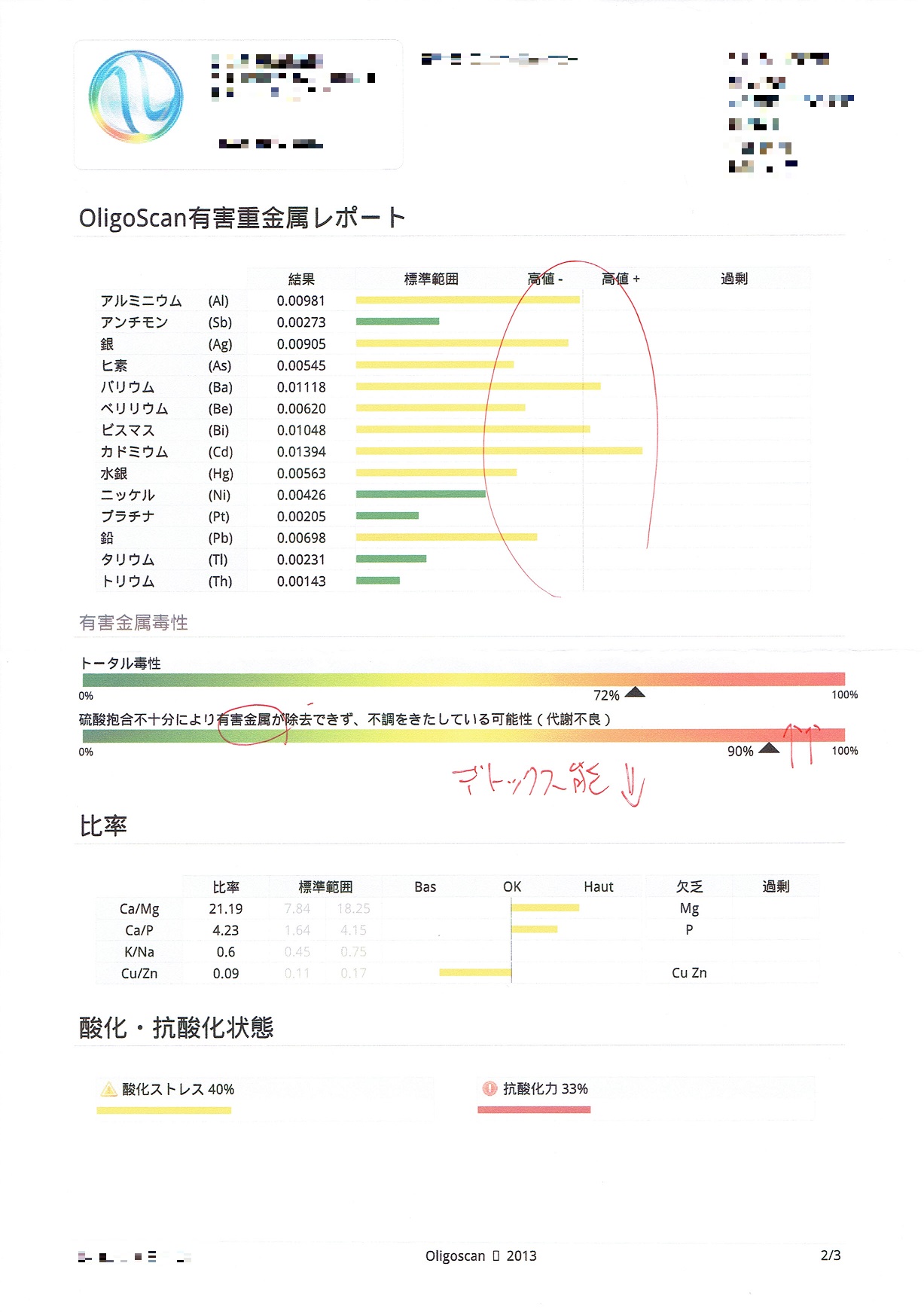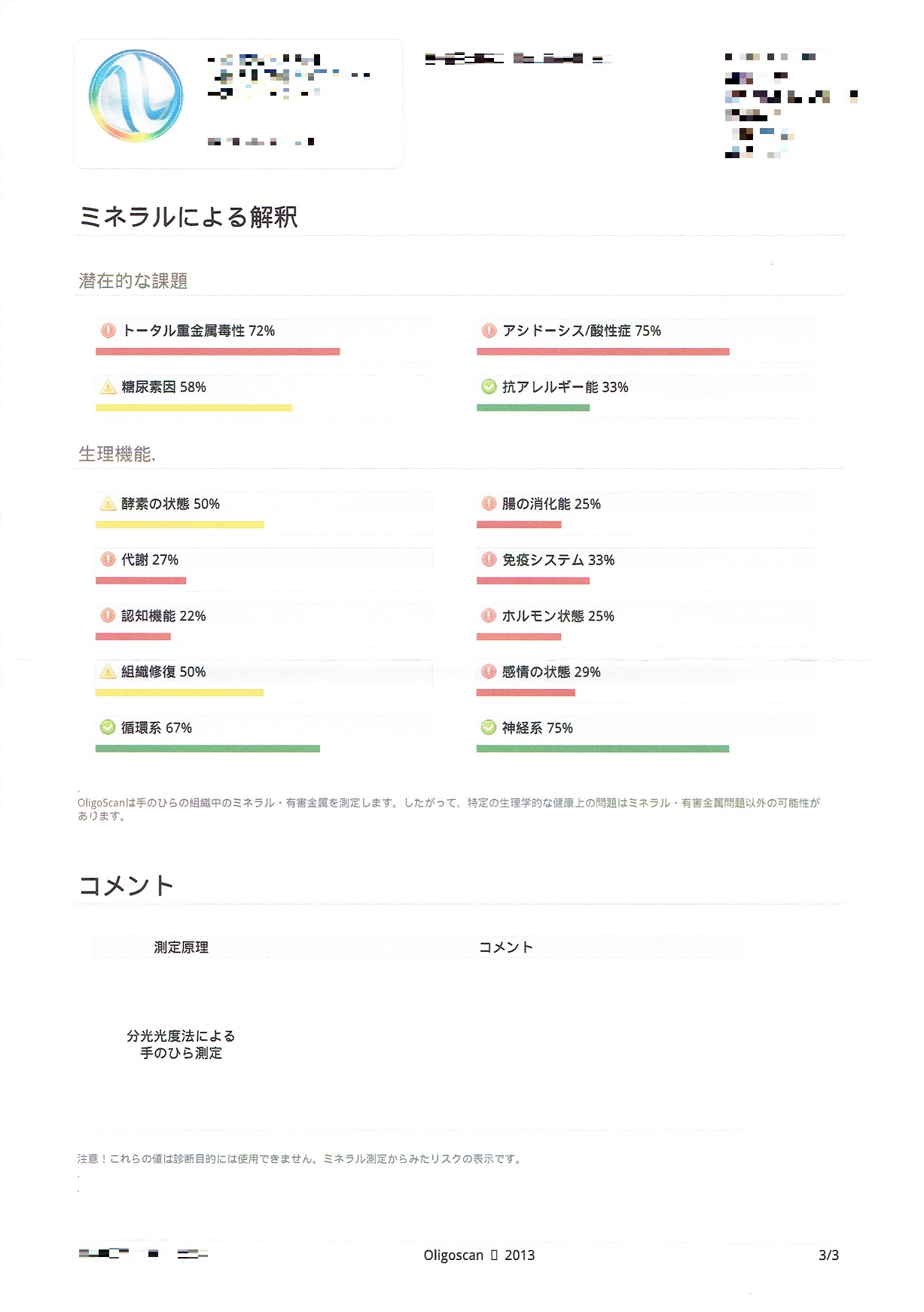
table of contents
OligoScan test
OligoScan test results in March 2016
Excerpt from record 6
the first page

OligoScan mineral measurement result report
Result, Standard range, Quite lacking–, Shortage-, Standard range-, ± Standard range+, High+. Excess++
Calcium
Magnesium
Phosphorus
Silicon
Sodium
Potassium
Copper
Zinc
Iron
Manganese
Chromium
Vanadium
Boron
Cobalt
Molybdenum
Iodine
Lithium
Germanium
Selenium
Sulfur
Mineral balance
Deficiency 100%
Excess 40%
2nd page

Oligoscan Hazardous Heavy Metals Report
Result, Standard range, High-, High+, Excess
Aluminum
Antimony
Silver
Arsenic
Barium
Beryllium
Bismuth
Cadmium
Mercury
Nickel
Platinum
Lead
Thallium
Thorium
Hazardous metal toxicity
Total toxicity 72%
Poor metabolism due to inadequate sulphate conjugation to remove harmful metals 90%
Ratio
Ratio, Standard range, Low, OK, High, Deficiency, Excess
Oxidation/antioxidation state
Oxidative stress 40%
Antioxidant power 33%
3nd page

Mineral interpretation
Potential challenges
Total heavy metal toxicity 72%
Acidosis 75%
Diabetic factor 58%
Anti-allergic ability 33%
Physiological function
Enzyme status 50%
Intestinal digestion 25%
Metabolism 27%
Immune system 33%
Cognitive function 22%
Hormonal status 25%
Tissue repair 50%
Emotional state 29%
Circulatory system 67%
Nervous system 75%
Oligoscan measures minerals and harmful metals in the tissues of the palm.
Therefore, certain physiological health problems may be other than mineral and toxic metal problems.
Comment
Measuring principle, Comment
Palm measurement by spectrophotometry
Note! These values cannot be used for diagnostic purposes. It is a display of risk from the viewpoint of mineral measurement.